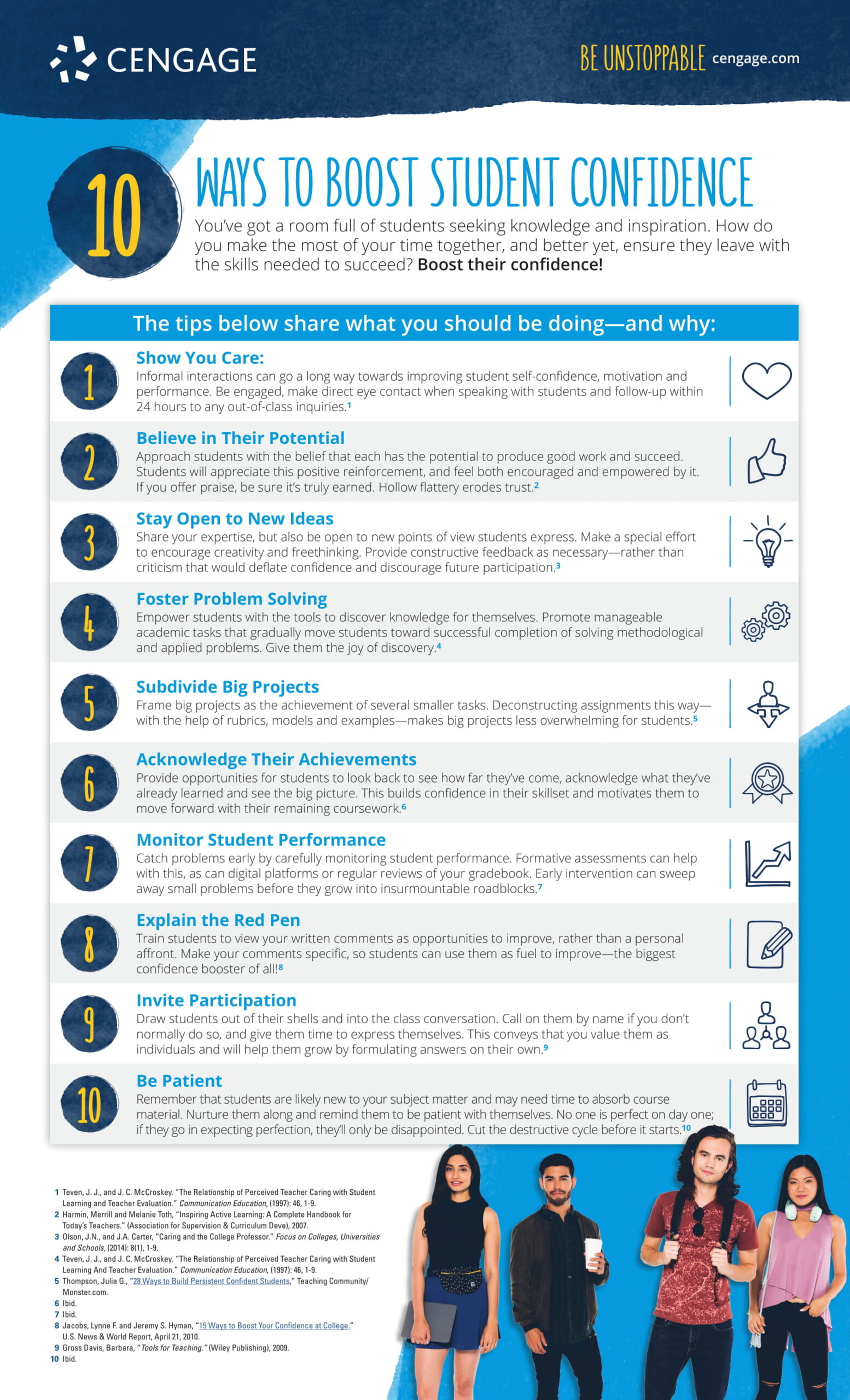Article Summary
- Openly endorse the concept of growth mindset. |Be mindful of the feedback you give.|Ask students to reflect after assignments. |Discuss your own experiences.|Talk about “productive failure.” |Offer low-stakes assignments.|Encourage students to utilize resources like office hours, study groups, etc.
- field_5cf83622ba22e
- field_5cf83622ba22e
- field_5cf83622ba22e
- field_5cf83622ba22e
- field_5cf83622ba22e
Janet Mizrahi is a continuing lecturer of professional writing at the University of California, Santa Barbara. She is also an author at BizCommBuzz.
I begin each new term by asking my students if they believe good writers are born that way. Inevitably, hands shoot up. I then go on to tell them that while some people may grasp concepts faster than others—like when my brother hopped on a bike and took right off, while I fell and fell until I managed to wobble down the sidewalk—anyone can learn to write well if they dedicate the time and hard work to improve.
The anecdote illustrates the notion of growth mindset, a term coined by Stanford professor Carol Dweck. It means people believe they can improve through dedication and hard work—that natural ability is merely the starting point to learning.
Those with fixed mindset, in comparison, think that ability is innate and, therefore, trying to learn something they’re not predisposed to is a waste of time.
Clearly, we want our students to believe they can succeed through hard work and diligence. As instructors, we can help students build growth mindset in a number of ways.
Teach growth mindset. The data is in—talking about growth mindset helps students adopt it. One study found that classes taught by professors who support a growth mindset saw “better educational outcomes for all students, and particularly for students from underrepresented racial and ethnic groups.”
Be mindful of your feedback. Emphasize improvement rather than talent or intelligence. As this post puts it, “praising people for their hard work inspires them to take risks, learn from mistakes, and move on from setbacks.”
Include reflection as part of assignments. Hard work may not be enough for some students. Ask them to reflect on their preparation for an assignment, how they performed on it and how they might do better next time.
Discuss your own struggles. Talking about your own experiences can inspire your students. The message is, “If I could do it, you can, too!”
Explain productive failure. Failure is part of the process of learning new concepts. Reiterate this each time students feel overwhelmed. Then give them what they need to improve.
Provide low-stakes assignments. Scaffold assignments so students have the opportunity to learn concepts before large portions of their grades will be affected. Explain that these lower stakes assignments are part of the process of learning, and that not getting it the first time is normal.
Encourage students to seek help. Many students see visiting their professors during office hours as a failure. Offer incentives to lure them in (I keep chocolate on my desk). Alternately, steer them to additional resources like campus study groups and learning centers.
I sometimes end my classes with a different personal anecdote. Years ago, I took karate. After my instructor showed our class a new, complex kick, the roomful of middle-aged women murmured, “We can’t do that,” to which our teacher would reply: “If you can’t do the kick the first time, do the kick ten times. If you can’t do the kick after ten times, do it a hundred times. And if you can’t do the kick after a hundred times, do the kick a thousand times. I guarantee you’ll get the kick.”
After my students recover from the shock that I took karate, they nod their heads. But maybe they are thinking they’ll get the kick.
To help you better spot a growth mindset vs. a fixed mindset, download our infographic.




